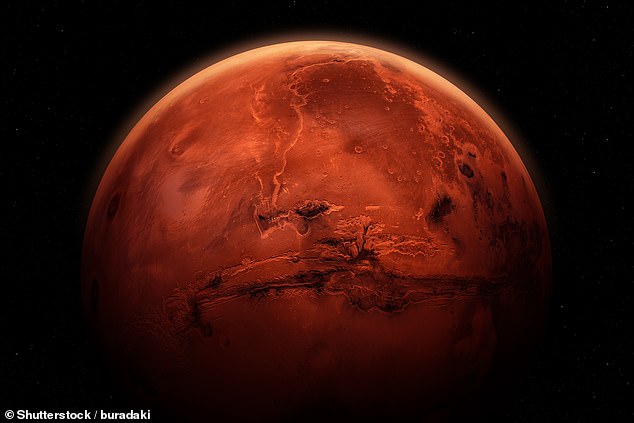Featured
- Get link
- X
- Other Apps
Life on Mars? Scientists Uncover Long Organic Molecules on the Red Planet
- READ MORE: Rover finds evidence of 'vacation-style' beaches on Mars
Organic molecules of 'previously unseen magnitude' have been found on Mars , adding further evidence that life may once have existed on the Red Planet.
Scientists have discovered lengthy carbon chains with up to 12 linked atoms in specimens of ancient Martian rocks that are several billion years old.
These particular organic compounds – the most extensive ones detected up to this point – might stem from fatty acids, which form the foundation of fats and oils and are produced on Earth via biological processes.
Scientists stated that the finding is of 'great interest' in the quest for possible indications of life.
The samples were gathered using SAM, which stands for Sample Analysis at Mars – an instrument onboard the spacecraft. NASA 's Curiosity Rover which has been studying the Gale crater since 2012.
It features both a gas chromatograph and a mass spectrometer, enabling it to analyze and identify molecules within samples.
The analysis showed that the gathered mudstone includes organic compounds such as decane, undercane, and dodecane.
The absence of geological activity along with Mars' frigid and dry environment has aided in maintaining this precious organic material over the last 3.7 billion years.

The experts stated that this dates back to the time when life initially appeared on our planet.
While fatty acids are an important component of living cells on Earth, they can also be formed by abiotic – physical, rather than biological – processes, they added.
Writing in the journal Proceedings of the National Academy of Sciences (PNAS) the team said their success paves the way for future missions in search of signs of complex, life-like chemistry.
'Organic molecules preserved in ancient Martian rocks provide a critical record of the past habitability of Mars and could be chemical biosignatures', they wrote.
The origin of the long-chain alkanes is still unclear; nonetheless, lab tests suggest they come from the saturated version of straight-chain, primary carboxylic acids [fatty acids].
'Although abiotic processes can form these acids, they are considered universal products of biochemistry - terrestrial, and perhaps Martian.
'Thus, the provenance and distribution of these molecules are of high interest in the search for potential biosignatures on Mars.'
Searching for further life-like chemistry on Mars will be one of the goals of the European Space Agency's upcoming ExoMars mission, set to launch in 2028.


The same team involved in this study will build an instrument similar to SAM for Dragonfly – the drone that is due to explore the surface of Titan, Saturn's largest satellite, from 2034 onwards.
A separate study recently concluded that Mars was once home to sun-soaked, sandy beaches with gentle, lapping waves.
Researchers discovered evidence of a 'vacation-style' environment on the Red Planet, despite there being no visible liquid on the surface of Mars today.
A global group of researchers leveraged information gathered by China’s Zhurong Mars rover to reveal concealed strata beneath the Martian terrain, which provides compelling evidence for a vast prehistoric sea in the planet’s north.
The latest study provides the strongest proof to date that the planet previously had a substantial amount of water and a more hospitable setting for life, according to the scientists.
Read morePopular Posts
Unmasking Misinformation: Journalist’s Quest for Verified Truth (International Edition)
- Get link
- X
- Other Apps
PTA Clarifies: X Disruption (Formerly Twitter) Unrelated to Local Internet Filtering – International Edition
- Get link
- X
- Other Apps
Comments
Post a Comment